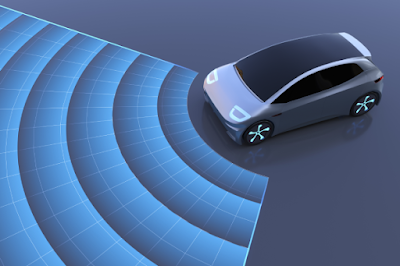Experiences Per Mile (EPM) can be defined as hyper-individualized experiences that solve a variety of consumer needs to help drivers and passengers maximize the time spent in their car. As a growing number of OEMs integrate more connected experiences and software-based solutions into their vehicles, measuring EPM has become critical to ensuring consumer needs are always met.
While they are still largely in development, autonomous vehicles (AVs) are already providing users with a blend of these experiences and solutions. With this offering likely to increase as they roll out, it is essential to understand their impact on EPM today. This blog will explore three perspectives that define this impact. In doing so, it will identify how experiences will change for passenger vehicles and how the industry can educate consumers on a world with AVs. It will also work to define the shared AV experience itself.
For passenger vehicles, autonomy will occur on a sliding scale, that is, the change within this sector is expected to happen gradually over time as the technology develops. AVs today are currently achieving SAE Level 2 autonomy, while vehicles capable of delivering Level 3 autonomy are currently in development. This gradual rollout complements a naturally evolving consumer experience in which the in-market technology is introduced to the customer before advancing over time. Simultaneously, the industry can leverage this rollout to research, develop, and test new customer interactions and experiences. These experiences should largely provide drivers and occupants with activities to participate in while the vehicle’s autonomous mode is enabled – providing room for OEMs and Tier 1 suppliers to deliver new experiences through entertainment and interaction between the vehicle and its occupants. However, before introducing them, the industry must ensure that autonomous vehicles, and the experiences they offer, are accessible to a broad range of consumers and are safe.
A key part in developing this accessibility is educating new vehicle owners thoroughly on the capabilities and limitations of the features they are purchasing. While this education could begin at the point of sale at the dealership or through the OEMs website, automakers could benefit from allowing the user to develop this knowledge independently. Research has indicated that most vehicle education happens during the ownership experience, meaning that new owners are likely to read educational materials, or watch related videos, after purchasing their vehicle. In relating this back to AVs, this gives the in-vehicle experience provider the responsibility of educating consumers on the easy and safe operation of autonomous vehicles with its features. There is a similar responsibility for this experience provider to demonstrate how to use these features best to deliver an optimal and personalized user experience.
Get Complete knowledge about How will Consumers Prepare for New In-Vehicle Experiences by visit us at EPM.

